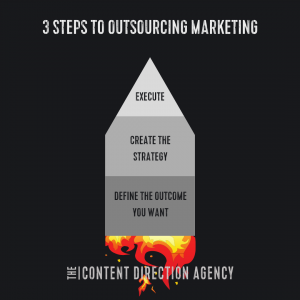It’s common knowledge that small business owners wear multiple hats. It’s part of the excitement and challenge of building your own business. But while it’s fun and rewarding to develop a strategy, work with clients, carry out marketing plans, improve your offerings, and track finances, it’s also time-consuming. Sure, most entrepreneurs can move mountains, but the last time I checked, there were still only 24 hours in a day.
Finding enough time in the day to check off important tasks is a huge challenge for small business owners. Prioritizing and trusting your intuition to determine what needs to be done (and when) is a constant juggling act. Still, even the most intrepid, energetic entrepreneurs can’t keep all those balls in the air forever. Sooner or later, they realize that there’s too much work to be done and not enough time to complete it.
What’s a small business owner to do? Adding hours to the 24-hour day is probably not going to happen, but there are some other alternatives that can allow you to make better use of the time you already have.
Software as a Service to the Rescue
Modern technology has provided us with myriad options for making our lives easier. However, certain advances are particularly helpful for small business owners. One recent change that has been instrumental in helping save time is the advent of software as a service (SaaS). SaaS platforms allow entrepreneurs to pay a small monthly fee for the use of powerful, cutting-edge applications. And SaaS tools are web-based, so the days of loading software or maintaining your own server are over.
Even though there are many types of SaaS systems for businesses, two stand out in saving small business owners time: online appointment scheduling software and marketing automation applications.
Online Appointment Scheduling Systems
Scheduling, changing, or canceling appointments can be incredibly time-consuming. For most small business owners, these tasks take valuable time out of their day — time that could be spent focusing on bigger-picture issues.
But for many small business owners, the thought of clients and prospects booking directly into their calendars sends a shiver down their spines. Online scheduling software companies know this, so they’ve designed features that provide built-in controls.
Online appointment scheduling programs are rules-based, which means you can regulate who can book with you, when they can book, and what they can book. You maintain full control of your calendar even though you’re letting others schedule directly into it.
Most entrepreneurs who try online booking overcome their fear of lost control quickly, especially when they realize how much time they regain. Plus, your customers will like the convenience of being able to book appointments easily and on their own.
Marketing Automation Software
Most small business owners aren’t marketing gurus. Even so, marketing is a necessary part of running any business, so it’s one of their key responsibilities. It’s necessary, but it’s also time-consuming, especially if you’re not skilled at it. That’s where marketing automation software comes in.
Systems like HubSpot, Hatchbuck, and others enable you to create set-it-and-forget-it emails that contact your clients and prospect on a preset schedule, such as when a prospective client signs up for your mailing list. These types of tools also allow you to send regular newsletters or one-time email blasts. Another benefit is the systems’ ability to provide detailed analytics on your marketing campaigns, letting you easily track each initiative’s effectiveness without spending a lot of time compiling data.
Find the Right Software Vendor and Start Saving Time
Whether you decide to move forward with a marketing automation system, an online scheduling application, or a different time-saving tool, selecting the right one is critical. Software applications can vary greatly, so be sure to properly analyze your options.
Here are a few pointers on what to consider when comparing systems:
1. Look at potential vendors’ tenure. It’s risky to trust your data to small or brand-new companies. Just like any other organization, software firms go out of business regularly. Be sure your preferred company has a proven track record. Ask how long it’s been in business and how many employees it has. These are good indicators of whether or not it will be around tomorrow.
2. Prioritize service. For a busy business owner, getting accurate, timely assistance is key. So when assessing software vendors, make sure you can speak with a live person if you need support. If you can’t, that’s a red flag. Sometimes, finding answers on your own is acceptable, but if you need help quickly, being able to pick up the phone and talk with someone can save you hours of time.
Ideally, you’ll be able to interact with the right people throughout your journey with the vendor. From coaching to onboarding to training and support, getting that personal touch can make a big difference.
3. Remember that “free” is not always free. Most so-called “free” services are free for a reason. Companies may be trying to entice you to use their free platform, only to constantly try to upsell you the paid version. Some even add fees once you start using the system in earnest. Other times, companies offering a free service are still in their infancy and trying to figure out their business models. If your software vendor isn’t sure how it’s going to make money and stay in business, you may want to steer clear.
Whether a system is free or not, always think in terms ROI. For example, a system that costs $ 99 per month may have a higher ROI than one that is free. If the $ 99 software package works better for your needs and saves you more time, it may be worth the monthly fee.
No, you can’t add another hour to the 24-hour day, but with time-saving software applications, you can reclaim a couple of hours. Now that you have some ideas on what types of systems to explore, it’s up to you to take the next step. Give them a try to add some time back to your busy schedule.
Need even more time-saving tips? Check out our “10 Ways to Increase Your Team’s Productivity in 30 Days or Less.”
Business & Finance Articles on Business 2 Community(49)





